#court archetypes: dethroned royals
Text

This is an index of the many, many guides created by the Fountain Of Knowledge also widely known as @inky-duchess. However I decided to organize and revise to share, after seeing one ask about whether or not there was a compilation.
Also, I had to breakdown the list over multiple posts due to Tumblr's constraints, so I have added a handy list with each part.
Table of Contents
Part One
Part Two ⬅ You Are Here
Part Three
Character Creation
Appearance - Character Traits - Unlikeable Characters
Clothing & Accessories
Jewels
Tiaras Part 1 - Tiaras Part 2 - Jewellery - Coronet
Beauty
Hair - Cosmetics & Makeup
Men
Headwear - Fashion - Clothes - Uniforms
Women
Headdresses Part 1 - Headdresses Part 2 - Headwear - Gowns
General
Dressing Your Monarch - The Suit - Footwear - Peasant Clothes
Clothes By Era
Regency Fashion - Renaissance Gowns - Victorian Fashion - Edwardian Fashion
Clothes By Culture
Middle Eastern - Celt - Native American/Indigenous - African Traditional - Asian Traditional - Russian Court Gowns
Writing People
Kings - Queens - Princes - Princesses - Male Consorts
Heirs & Spares - Mistresses - Bastards - Ladies In Waiting
Ambassadors - Wards & Fostering - Servants - Royal Guards
Court and Courtiers
Surviving
Fun & Games
Male Court Positions Part 2
Female Court Positions
Monarch's Council
What Nobles Do
Big Happy(?) Family
Writing a Royal Family Part 2
Ottoman Harem
Great Houses (19th-20th Century)
Russian Nobility
Medieval Household
Etiquette
Courting - How To Dress - Balls - Tea - A Day At Court - Court Etiquette
A Day In The Life Of...
Royalty - Queens - Princesses - Noble Ladies - Courtiers
How to be Social
Tis The Season
Debutante Ball
Balls
Hosting a Society Dinner
Food & Drink
Letters & Correspondence
Going Hunting
Gestures
Court Archetypes
The Good King
The Bad King
The Good Queen
The Bad Queen
The Princess
The Prince
The Male Mistress
The Advisor
The Mentor
The Pretender
The Dynasty
The Dethroned Royals
The Courtiers
Ladies-In-Waiting
16 notes
·
View notes
Text
Court Archetypes: The Dethroned Royals
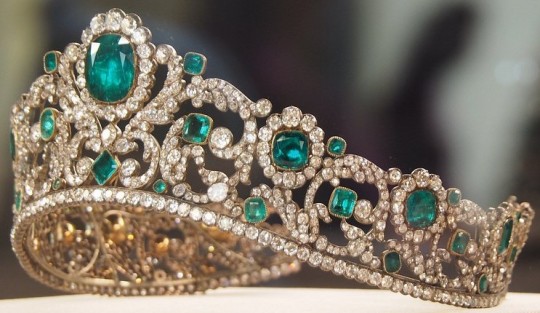
So obviously I was inspired by The Crown to write this post. Pre-WWI Royalty has always piqued my interest, my favourites of course being the Romanovs who I've been obsessed with since I was like six. But the tragic ends and fates of royals who have been deposed have always caught my interest. So in this post, also inspired by an ask sent in by @therealcommanderbear , we'll be discussing displaced/dethroned royalty and their fates.
Usually when we see this in fiction we have 3 categories.
The Fighter

This displaced monarch fights for what is theirs. They will attempt to win or win back their thrones and kingdoms that are rightfully theirs.
Edward IV: Edward IV was displaced in 1470. He fled for his life after meeting the combined forces of his brother the Duke of Clarence and the Earl of Warwick. He escaped by boat with his close friends and his younger brother, almost drowning at sea before landing in Burgundy. His family escaped to sanctuary where his son, Edward was born. After a chat with the Duke of Burgundy who was kinsman and ally of the king, he returned to England after six months and smashed his enemies in battle at Barnet and Tewkesbury.
Henry Tudor/VII: Henry went into exile at fourteen after the fall of his house. He lived in Brittany with his uncle, waiting in the wings until there was opportunity to return to England. In 1483, an offer was made to let him come home and take up his Dukedom. But in the chaos after the death of the current king, the offer was forgotten. Henry attempted to invade with help from the Duke of Buckingham but was beaten by the weather. He returned in 1485 and won the throne, installing the House of Tudor and ending the Plantagenet line.
Margaret of Anjou & Edward of Westminster: After Henry V died, the kingdom was left to his young son Henry VI. He was not the best king, most adept at praying and sleeping. During the unrest that would eventually unseat him, his wife Margaret took control of their armies and fought for the throne. She was exiled but returned with a Scottish army. She lost some battles and won a few but was eventually beaten and the crown was lost. But after a shock defection from an enemy, the Earl of Warwick, she and her son aimed to take back the throne. The kingdom was won by Warwick yet the Queen and Prince were trapped in France thanks to bad weather. By the time they landed, Warwick was dead, the York king was back and they were effectively fucked. They made a dash to Wales hoping to find support but thanks to a flooded river they were forced to fight at Tewkesbury where the prince died and the queen was captured.
The Refugee

Some royals escape from the coups and revolutions that displace them. They usually flee to family members in other countries or allies in hope that they will shelter them or help them.
Alice of Battenburg & Prince Philip of Edinburgh (Greece & Denmark): After the Greco-Turkish war, things in Greece were getting though for the royal family. After much consideration, the coup that took over exiled Prince Andrew, Princess Alice and their four daughters and their infant son. Famously little Prince Philip was sleeping in a converted fruit crate while this happened. They went to Germany, France and England hopping about without a home. The princesses married into mainly German families and Philip worked in the Navy. In 1952, he married Princess Elizabeth heir to the English throne and shed his foreign titles in favour of a British one. Alice of Battenburg returned to Greece where she founded a nunnery, often selling her jewels to fund the order. During civil unrest, Alice came to England in order to live out her final years at Buckingham Palace.
Dowager Empress Maria Fyodorovna: The mother of Tsar Nicholas II fled Russia during the Revolution. She made it England on invitation from her sister Queen Alexandra. She lobbied to get asylum for the rest of her family but before it could be agreed, it was too late. She returned to Denmark where she died years later.
Marie-Therèse, Madame Royale and Duchess of Angoulême: The only living daughter of Marie Antoinette and Louis XIV was imprisoned along with her mother and brother during the Revolution. After the death of her parents, she was exchanged for French prisoners and sent to her mother's home country of Austria. During the brief restoration, she returned to France and served as Duchess of Angoulême.
Charles II: After the English Civil War, Charles I acted stupidly and got his head cut off leaving us with that cunt Oliver Cromwell. During the time where Cromwell was invading and insulting my country and being a general warty bollocks, the queen had escaped to France with her children. Her daughter Henrietta was married to the Duc of Orléans and her son Charles got busy with the ladies of the court. But Charles was invited back to be king during the Restoration where he chilled on his throne for a good lot of years where he slept around, partied and generally acted awesome. (*plays a loop of Horrible Histories' Charles II's Rap*)
The Tragic

And yet sometimes the story does not end so happily. Revolutions try to destroy the object of their opposition, mainly taking violent options.
Marie Antoinette, Louis XVI & Louis-Charles (Louis XVII): Probably the most famous revolution, the French Revolution claimed the lives of most the immediate Royal family. Louis XVI died first, guillotined after standing trial. His wife Marie Antoinette followed a few months later. Louis-Charles the Dauphin and the accepted king to loyal monarchists was kept in a dank dark cell, bullied into announcing lies that would further smear the reputations of his parents including a testimony that his mother had molested him. Louis-Charles died in the cell, thanks to the damp cell hampering his already ill heath.
Tsar Nicholas II, Tsarina Alexandra, Grand Duchesses Olga, Tatiana, Marie, Anastasia and Tsarevitch Alexei: The Russian Royal family was dethroned during the Russian Revolution and imprisoned by the Bolsheviks. The royal family was sent north to Siberia to live in exile under house arrest. They remained positive thinking that somebody would rescue them be it the White Army or their cousins in England. They believed that they would be banished abroad and sewed their corsets full of jewels. The family was awoken one night to "take a photograph" in the basement of the House of Special Purpose in order to prove they were alive. The family waited along with some close friends, the Tsarina and the crippled Tsarevitch seated. Eleven gunmen entered the chamber and began firing at the family. The men died quickly but thanks to the jewels sewn into their corsets, the women were harder to kill. Once they were dead, the revolutionaries dumped the bodies in a nearby wood separating them so that if anybody found them, they would not think that it was the royal family. During the late half of the 20th century, the bodies were found and identified before being buried.
#court archetypes#court archetypes: dethroned royals#alice of battenburg#Prince philip#Charles ii#edward iv#philippe d'orléans#tsarina alexandra#tsarevich alexei#tsar nicholas ii#grand Duchess olga#grand duchess Tatiana#grand duchess marie#grand duchess Anastasia#royal court#royalty#royal#writing advice#writing advice writing reference#writing reference writing resources#writing references#writing resources writing advice#writing resources#writing royalty#fantasy nobility#writing nobility#nobility#bolshevik revolution#french revolution#Versailles
702 notes
·
View notes
Text
Thelem-Ra and the Princesses of Power
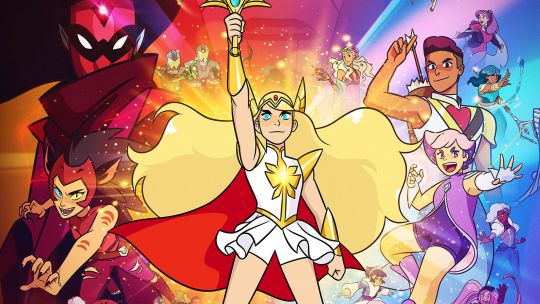
Due to strictly enforced gender norms, I wasn’t allowed to be obsessed with the original She-Ra cartoon. I could play with a friend’s sister’s She-Ra toy, but I never dared ask for my own.
That’s partly why Netflix’s remake She-Ra and the Princesses of Power means so much to me. Not only is it a version I can can openly discover and geek out over, but the characters’ wide range of age, gender expression and body type makes the fantasy realm of Etheria into a playground for the imagination -- one makes fans like me feel specifically included, even if it’s mainly aiming to entertain kids.
Any storytelling that draws from mystical currents will end up echoing familiar tropes and ideas from our own world. Attempts to portray existing magickal practices accurately almost always disappoint, as they did in Netflix’s other “princess of power” story, The Chilling Adventures of Sabrina (which is really entertaining nevertheless).
Isn’t it funny how the stories which offer up a wealth of artistic inspiration for magic often prove more durable than those depicting “real-life” magic use? The more abstract the characters’ powers are, the more possibilities we see in exploring them ourselves, and the more permission we feel to make something truly our own.
In the new She-Ra’s case (and in similar shows, like Steven Universe), magic is married to technology in a way that kids watching today will intrinsically understand, aligning neatly with post-modern chaos magick traditions.
In terms of old-school stuff, the Princesses’ magic is elemental in nature -- an expression of the soul of their homeworld, and a tool for regulating planetary harmony. The show departs from the classical elements of Earth, Air, Fire, Water, etc., which is fine, because their planet is not our planet, and its properties are still being revealed... to the characters, as well as to us.
But let’s not overlook that the very idea of “Princesses of Power” is old-school, and has a deep footprint in the history of tarot -- particularly the one crafted by the Dark Lord himself, Aleister Crowley.
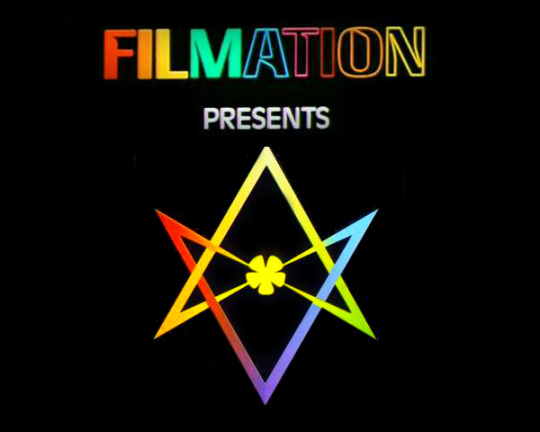
Before Crowley’s Thoth deck, the tarot’s court cards historically consisted of King, Queen, Knight, and Page -- a total sausage-fest, though Pamela Colman Smith brought out a wonderful androgyny in her illustration of the Pages (and in many of her deck’s other figures), which seems to even out the gender spectrum a bit, and is partly why the deck remains appealing to new users over a century later.
Conceived in the 1930s, Crowley’s court consists of a Knight, a Queen, a Prince, and a Princess. This “modern” twist must have seemed terribly progressive at the time, dethroning the King and elevating the court’s lowest ranking member (a page is just a humble servant of the royal court), consecrating that role as female.
You could write an entire book about the gender problems in Thelema (the religion founded by Crowley, which remains popular today). In fact, that book probably exists already, and contemporary Thelemites are continually exploring and re-examining the way our evolving social and scientific views of gender mesh with their religion’s core beliefs.
For now, all that’s important is that Crowley took a humble servant and elevated her to a PRINCESS OF POWER.

The four roles in the tarot’s court each correspond to a different classical element, the Page/Princess’s being Earth. And each of these four earthy figures is herself an expression of the classical elements: Fire of Earth (Wands), Water of Earth (Cups), Air of Earth (Swords), and Earth of Earth (Pentacles, or in Crowley’s case, Disks).
Exploring these cards in an earlier lesson, I wrote:
“The Page’s defining quality is not sex but immaturity, a word which inspires unnecessarily negative associations. Let’s not forget the raw potential we find in the young and/or untested, or the curiosity and vivacity they may bring to their work. As such, each of the four Pages represents a latent untamed force for change.”
What I love about Lady Frieda Harris’s illustrations in the Thoth deck is that the Princesses are all portrayed as doing something. These images could be pulled from the opening credits of She-Ra.
Think about that: she drew them as superheroes. The 1930s were the period when these kinds of heroes began to proliferate in comics, and Superman himself debuted in 1938 -- the same year Crowley and Harris began working on the Thoth deck.

Like She-Ra’s heroines, our tarot Princesses owe all their strength (as well as their weakness) to their signature elements, though in Crowley’s world there is a clear elemental hierarchy, due to spiritual ideas imparted by Western esotericism. As such, the Princess of Disks (Earth of Earth) sits at the bottom of the totem pole.
This kind of hierarchical thinking (and binary gender) is exactly what drives many people away from traditional forms of magick. I sympathize, and agree that we should never stop challenging these ideas.
However, what really we see in the Thoth deck is a setup for an archetypal story in which the low are made high; in which Princesses serve as the catalyst for changes that transform reality itself.
Just like Ace -- the lowest number in the minor arcana, but a symbol of tremendous power -- the Princess represents a place to build upward and outward from. Though she mirrors the queen in her gender, it’s the King/Knight she reflects in her agency and authority.
“The Princess is the throne of her Ace,” observes Thelemic teacher and author Lon Milo Duquette. In his book The Chicken Qabalah, he writes at length about the importance of Princesses: “They are positioned at the lowest end of our elemental universe, but they also embody the foundation of our universe.”
Awakening and exploring our Princess nature will gradually help us “escape the prison of matter” and “live in the bliss of the highest world.”
He even presents a diagram that shows how you can use the Princess and Ace-through-Ten cards to divide up the globe -- a handy tool for readings involving a geographical component.
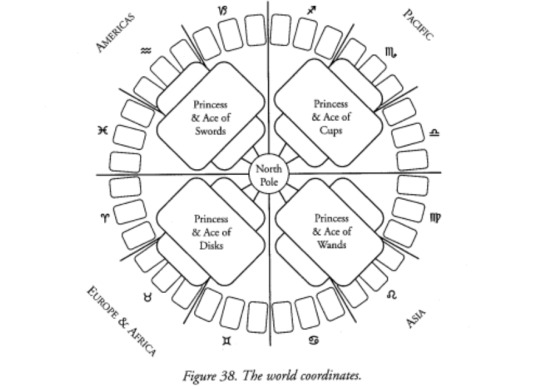
In the Netflix show, Adora is offered a very similar view of her world by First-Ones avatar Light Hope, who reveals how the Princesses -- each an expression of their respective element -- are all interconnected as regulators of Etheria’s holistic balance.

Of course, this is just an abstract diagram of Etheria’s actual geography. Entrapta’s model in the same scene shows that these centers of power are just as unevenly dispersed on Etheria as they are on our own planet.

Duquette’s book offers a qabalistic Creation myth based on these feudal archetypes, which may explain why royal figures still play such a prominent role in our storytelling.
“The you that you think is you is not you,” he explains. “It is a dream you. In fact, the you that you think is you is a dreamer inside a dreamer inside a dreamer inside a dreamer. You are the King of the universe, who has fallen asleep and is dreaming he is the Queen, who has fallen asleep and is dreaming she is the Prince, who has fallen asleep and is dreaming he is a sleeping princess.”
In Duquette’s fairytale of Creation, the Prince and Princess are twins birthed by the Queen -- different in sex, but alike in power. HELLO PEOPLE, this is the exact premise of the original She-Ra cartoon.

Within the new show, we see the struggle of a world straining to evolve in two opposing directions.
The Fright Zone is a technocratic military junta which only managed to come into power via political exploitation, capturing the Black Garnet runestone from the family of Scorpia, Etheria’s last “slumbering” princess.
One could compare the Fright Zone’s hierarchy to that of the classic Rider-Waite-Smith court cards, in which Hordak serves as King, Shadow Weaver as Lord, Force Captains are Knights, and all the the various wanna-be’s (including Adora and Catra in the first episode), servants, robots, and various scavengers remain in the Peasant class.
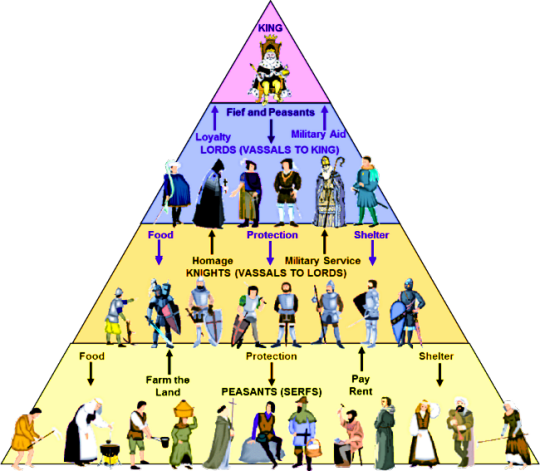
It’s not clear yet how the rest of Etheria is governed. It bucks this traditional structure, resulting in a lumpy sort of meritocracy in which those with the most magical power wield the most influence, but rulers are mainly tasked with maintaining harmony and protecting their subjects against external invasion. There’s evidence of a soldier class, but the “lowest” citizens we encounter are shown existing peacefully in (apparently) self-governing tribal cultures. They don’t serve the Princesses, they simply enjoy the freedom afforded to them by the Princesses’ rule. People live for love, for pleasure, for adventure, and/or the pursuit of intellectual aims.
(The only exception seems to be Entrapta, the Silicon Valley tech-bro stand-in who presides over her own servant class of attendants and robots. And it’s worth mentioning that she’s also the only Princess whose power isn’t anchored to an elemental source.)
In this sense, Etheria is an impressive embodiment of Thoth deck court structure, populated by Queens, industrious “princes” like Bow and SeaHawk, and true Princesses -- “Every man and every woman is a star,” with plenty of room to accommodate those who present neither as fully male or female, those with magical powers and those without.
But if you’ve already read this far, let’s take this one step even further and look at how SHE-RA IS ALSO A KNIGHT.
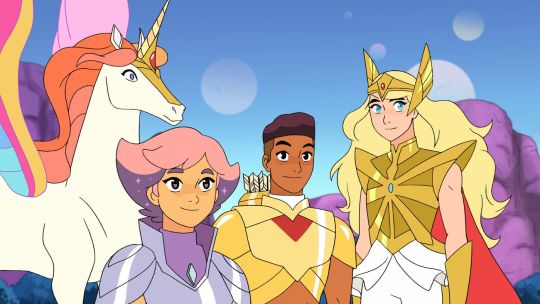
That’s right, you heard me: everything that Adora symbolizes as Princess, She-Ra articulates as a Knight. She even gets a horse! And a sword, and a shield! Note that Adora hasn’t really changed: she was a Knight in Hordak’s world also. She has simply relocated from one symbolic reality to another -- a more Thelemic one, in which Knights are kings. Thus, as She-Ra, she becomes Hordak’s symbolic equal.
And note that Noelle Stevenson’s re-imagining of the series is entitled “She-Ra and the Princesses of Power,” as opposed to the original title “She-Ra: Princess of Power.” She is of their ilk, but different. As Perfuma might say: “She is the She-Ra.”
Symbolically, Adora contains all the elemental potential of a Princess who must still evolve and struggle to awaken. She-Ra, however, is the elemental Fire that awaits on the other side -- the King who dreams he is a Queen, who dreams she is a Prince, who dreams he is a Princess. We know from Light Hope that She-Ra’s lineage extends thousands of years. She is not a person, she’s a function -- and that function is to protect Etheria by transforming reality.
In other words: Adora’s glorious transformation into She-Ra is a microcosm of Etheria’s transformation, which She-Ra herself was created to oversee.
youtube
In this way, the series bears the greatest resemblance to Alan Moore’s tremendous graphic novel Promethea, which tells the story of an ordinary young woman named Sophie who discovers she’s the latest incarnation of a mythical “science heroine” -- who may or may not have been created to usher in the Apocalypse. And she is guided in this process by other Prometheas, who represent an interesting range of ethnicities, body types, and genders.
Sophie’s exploration of her own newfound identity sends her on an odyssey that matches many beats in Adora’s. What are the limits of her new powers? How can she learn to transform at will? What dangers will this confer on her loved ones? Which parts of her belong to Sophie, and which to Promethea?
These are classic superhero problems, but Sophie’s quest is one that’s specifically designed to transform the reader as well: Moore has crafted a story that also serves as a primer for modern occult traditions, including tarot cards.

While Moore looks beyond Thelema, the works of Aleister Crowley remain a key influence -- the horny old magician even appears as a recurring character, in a handful of cheeky cameo roles.
Like She-Ra, Promethea points to the golden thread of continuity linking the individual and the divine. That’s a birthright that even the humblest, most overlooked person shares with the rest of humanity, but our world’s prevailing powers do everything they can to conceal that truth. Our own senses play tricks on us as well, supporting a view of the world in which we remain small and powerless, in which our lives, our suffering, our deaths, mean nothing.
The artists mentioned in this post -- Smith, Crowley, Duquette, Harris, Moore, Stevenson -- might not agree on everything, but they share the same quest: to awaken all these slumbering princesses. That includes you, dear reader. Wake up, your kingdom needs you!
Our language has another word for this sacred process: animation.
This is why you shouldn’t feel silly enjoying She-Ra or any other fantasy, at any age. This is why little girls shouldn’t be discouraged from play-acting as princesses (and neither should little boys). Society can only stand to improve from humans exploring their Princess powers. Many of these magical abilities will prove to be connected to life-saving (perhaps even civilization-saving) advantages further down the road. Magic is real, and we all stand to benefit from it.
“The clothes you're wearing, the room, the house, the city that you're in. Everything in it started out in the human imagination,” Moore writes in Promethea. “Your lives, your personalities, your whole world. All invented. All made up. All the wars, the romances. The masterpieces and the machines. And there's nothing here but a funny little twist of amino acids, playing a marvelous game of pretend.”
For the honor of Grayskull, it’s time to conduct yourself accordingly.

Have a tarot reading request or tarot-related question for Arcanalogue? Ask here. Tips accepted (but not required) via Venmo, @arcanalogue. Or support my Patreon? I’d love that.
158 notes
·
View notes